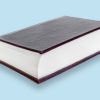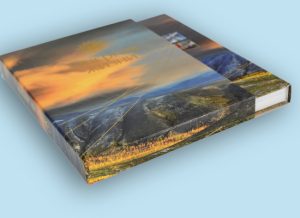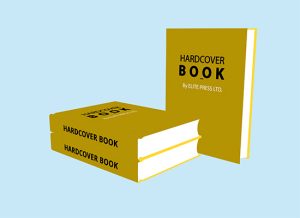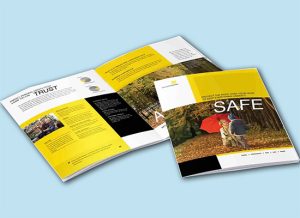Short Description
Heavyweight Booklets
Please select artwork files:

Related Products
Additional Information
Get durable Heavyweight Booklets for high-quality, professional prints. Ideal for reports, manuals, and presentations that need extra strength.
Heavyweight Booklets: A Detailed Exploration
Introduction to Heavyweight Booklets
Heavyweight booklets represent a premium category of printed materials, designed to combine durability, quality, and a professional appearance. The term “heavyweight” generally refers to the use of thick, high-quality paper stock for the pages and cover, resulting in a more substantial and durable booklet than those made with lighter paper. These booklets are often chosen for their ability to make a lasting impression, conveying a sense of importance, luxury, and durability in the printed medium.
Whether used in business presentations, high-end marketing materials, catalogs, or special event programs, heavyweight booklets stand out for their enhanced tactile feel and visual appeal. Their durability, combined with the potential for sophisticated design elements, makes them suitable for a wide variety of applications where quality is paramount.
What Are Heavyweight Booklets?
Heavyweight books are multi-page printed documents that use thick, high-quality paper stock for both the interior pages and the cover. The heavier paper gives these booklets a robust and premium feel, distinguishing them from standard booklets, which are often made with lighter, more fragile paper.
The term “heavyweight” typically refers to paper with a higher GSM (grams per square meter), which indicates the thickness and weight of the paper. For example, standard paper used in booklets might range from 80 to 100 GSM, while heavyweight booklets may use paper in the range of 150 to 300 GSM for the interior pages, and even thicker stock for the cover. This thicker paper not only improves the tactile experience but also enhances the visual impact of the booklet, as heavyweight paper is often better suited for high-quality printing and finishing techniques.
Paper Weight and GSM: Understanding the Basics
To fully understand heavyweight books, it’s essential to grasp the concept of paper weight, typically measured in GSM. GSM refers to the weight of the paper in grams per square meter. A higher GSM number indicates a heavier and thicker paper, which translates to a more durable and premium product.
- 80-100 GSM: This is typical for everyday printing and standard documents. It’s lightweight, flexible, and used for booklets where cost efficiency is more important than durability.
- 120-150 GSM: This is a medium-weight paper, often used for more formal documents, like high-quality brochures or business reports. It strikes a balance between flexibility and durability.
- 150-250 GSM: This range is where heavyweight paper begins. It’s used for premium booklets, as it provides a sturdy feel and the ability to hold up well over time.
- 300 GSM and above: Paper in this category is very thick and often reserved for covers of heavyweight books, postcards, or business cards. It provides significant durability and is ideal for protecting the contents of a booklet.
In heavyweight booklets, the interior pages often range from 150-250 GSM, while the cover may be 300 GSM or more. This combination gives the booklet both a sturdy interior and a robust exterior, making it ideal for projects that need to look and feel professional and premium.
The Importance of Design in Heavyweight Booklets
The design process for heavyweight books is crucial to maximizing their impact. The thicker, high-quality paper used in these booklets enhances color saturation and image clarity, making them ideal for projects that require crisp, vibrant visuals. Graphic designers often prefer heavyweight paper because it allows for more sophisticated printing techniques and finishes that might not be as effective on lighter stock.
Some key design considerations for heavyweight booklets include:
- Color Saturation and Printing Techniques: Heavyweight paper absorbs ink differently than lighter paper, often resulting in richer, deeper colors. This makes heavyweight books ideal for projects with high-quality images, complex graphics, or vibrant color schemes. The paper’s thickness also minimizes the risk of ink bleeding through to the other side of the page, ensuring a clean and polished look.
- Finishing Techniques: Heavyweight books are well-suited for a variety of finishing techniques that can further elevate the design, such as:
- Glossy or Matte Coating: Applying a glossy or matte coating to the pages or cover adds an extra layer of protection and can enhance the visual appeal of the booklet. Glossy finishes create a shiny, reflective surface, while matte finishes offer a softer, more subdued look.
- Foil Stamping: Foil stamping is a decorative technique that adds metallic or colored foil to the cover or interior pages. This technique is often used in luxury booklets to add a touch of elegance and sophistication.
- Embossing/Debossing: These techniques raise or lower parts of the cover to create a tactile, three-dimensional effect, making the booklet more engaging to the touch.
- Typography and Layout: The layout and typography in a heavyweight booklet must be carefully considered to match the premium nature of the paper. Clean, modern fonts and well-organized content can help maintain a professional tone, while creative layouts and unique typographic choices can lend a more artistic or bespoke feel to the booklet.
- Binding Methods: Binding is another important consideration when designing heavyweight booklets. Popular binding methods for heavyweight booklets include:
- Perfect Binding: This method glues the pages together along the spine, creating a clean, professional look. Perfect binding works well with heavyweight booklets, as the thicker paper is better suited for this style of binding.
- Saddle Stitching: This method uses staples along the spine to hold the pages together. While it’s more common in lighter booklets, it can still be used for heavyweight booklets, particularly for shorter publications.
- Spiral or Wire-O Binding: These methods involve punching holes along the edge of the booklet and binding the pages with a metal or plastic coil. This type of binding is often used for workbooks, manuals, or catalogs, and it works well with heavyweight paper due to its durability.
Types of Heavyweight Booklets
Heavyweight booklets come in various forms, each suited to different purposes. The versatility of heavyweight booklets makes them ideal for a wide range of industries and applications, from marketing and business to personal projects and events. Some common types of heavyweight booklets include:
- Business Reports and Corporate Presentations: In the corporate world, heavyweight booklets are often used for annual reports, financial statements, and high-level presentations. The premium feel of heavyweight paper reflects the professionalism of the company, making a strong impression on clients, investors, and stakeholders.
- Product Catalogs: Heavyweight booklets are ideal for product catalogs, particularly for high-end or luxury brands. The thick paper adds to the perceived value of the products being showcased, and the durable construction ensures the catalog will hold up even after extensive handling.
- Event Programs and Brochures: Whether for a wedding, a corporate event, or a special occasion, heavyweight booklets add a touch of elegance to event programs and brochures. They make excellent keepsakes for guests and can be customized with unique finishes like foil stamping or embossing.
- Portfolios: Creative professionals such as photographers, graphic designers, and artists often use heavyweight booklets to showcase their work. The thicker paper ensures that their images and designs are presented in the best possible quality, while the robust construction ensures the portfolio can be handled frequently without damage.
- Marketing Materials: Companies looking to impress potential clients or customers often choose heavyweight booklets for brochures, direct mail campaigns, or promotional materials. The durability and quality of heavyweight booklets help convey the brand’s commitment to excellence and attention to detail.
- Instruction Manuals and Guides: Heavyweight booklets are also commonly used for instruction manuals, user guides, or product documentation that needs to last. The thick paper ensures that the booklet can withstand frequent use, making it ideal for long-term reference materials.
Benefits of Heavyweight Booklets
There are numerous reasons why organizations, businesses, and individuals choose heavyweight booklets over lighter alternatives. Some key benefits include:
- Durability: The thick, sturdy paper used in heavyweight booklets ensures that they can withstand frequent handling and storage. Unlike lighter booklets, which may tear or crease easily, heavyweight booklets retain their shape and structure over time.
- Premium Feel: The tactile experience of handling a heavyweight booklet immediately sets it apart from standard booklets. The thicker paper feels more substantial, creating a sense of luxury and quality that reflects positively on the content inside.
- Enhanced Visual Appeal: Heavyweight paper is better suited to high-quality printing, allowing for richer colors and sharper images. This makes heavyweight booklets ideal for projects that rely on strong visuals, such as portfolios, product catalogs, or marketing materials.
- Versatility: Heavyweight booklets can be customized in a variety of ways, from unique binding methods to special finishes like embossing or foil stamping. This versatility makes them suitable for a wide range of applications, from corporate reports to personal projects.
- Lasting Impression: Whether used in business or personal settings, heavyweight booklets leave a lasting impression on the reader. The combination of quality materials, professional design, and attention to detail ensures that the booklet stands out from the competition.
Common Applications of Heavyweight Booklets
Heavyweight booklets are used across a wide range of industries and contexts, from business and marketing to personal events and creative projects. Some common applications include:
- Corporate Annual Reports: Companies use heavyweight booklets for annual reports and financial documents that need to convey professionalism and attention to detail.
- Luxury Brand Catalogs: High-end brands often use heavyweight booklets for product catalogs, ensuring that their products are presented in the best possible light.
- Creative Portfolios: Designers, photographers, and artists use heavyweight booklets to showcase their work, taking advantage of the thick paper’s ability to enhance image quality and presentation.
- Event Programs: From weddings to corporate events, heavyweight booklets make elegant and durable event programs that guests can keep as mementos.
Conclusion
Heavyweight booklets are a premium option for printed materials that require durability, visual appeal, and a professional touch. The use of thick, high-quality paper sets these booklets apart from their lighter counterparts, making them ideal for a wide range of applications, from business reports and product catalogs to event programs and creative portfolios. Whether used for corporate presentations or personal projects, heavyweight booklets offer a combination of luxury, functionality, and lasting impact that ensures they stand the test of time.
Get Your Quote
My Account
About Us
Our Products
Contact
Follow Us On
We Accept




















